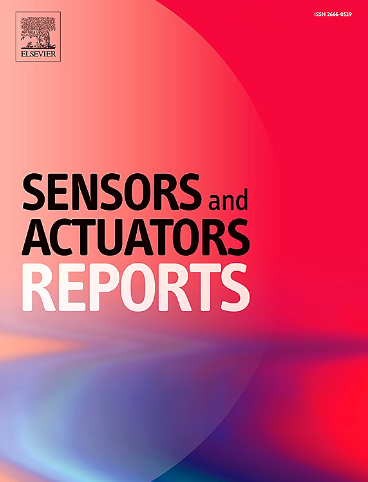基于机械剥离MoSSe薄膜的广谱UV-Vis-NIR光电探测器
IF 7.6
Q1 BIOTECHNOLOGY & APPLIED MICROBIOLOGY
引用次数: 0
摘要
近年来,二元过渡金属二硫族化合物(TMDs)由于其优异的稳定性和光电性能而成为一类极具发展前景的光电材料。然而,二元tmd通常与深缺陷态相关,阻碍了器件光响应性和响应时间的提高。二元二维(2D)材料的合金化为解决这一问题提供了有效的方法。报道了一种基于机械剥离MoSSe薄膜的宽带金属-半导体-金属(MSM)光电探测器。该器件在UV-Vis-NIR波段(375 ~ 1550 nm)具有良好的响应性和快速响应。在532 nm激光照射下,器件的光响应率R为15 mA/W,比探测率D1*为6.91 × 109 Jones,比探测率D2*为6.48 × 109 Jones,响应上升时间为43 ms,下降时间为38 ms。利用单点扫描成像系统实现了光电探测器在1550 nm的光电成像。这项研究对二维材料领域,特别是用于宽带光电探测器和光电成像的MoSSe做出了贡献。本文章由计算机程序翻译,如有差异,请以英文原文为准。
Broad spectrum UV–Vis-NIR photodetector based on mechanically exfoliated MoSSe thin film
In recent years, binary transition metal dichalcogenides (TMDs) have emerged as a highly promising class of optoelectronic materials, due to their exceptional stability and optoelectronic properties. However, binary TMDs are typically associated with deep defect states, impeding the enhancement of the device's photo responsivity and response time. The alloying of binary two-dimensional (2D) materials provides an effective solution to this problem. A broadband metal-semiconductor-metal (MSM) photodetector based on a mechanically exfoliated MoSSe thin film is reported. The device shows excellent responsivity and fast response at UV–Vis-NIR wavelengths (375–1550 nm). Under the irradiation of the 532 nm laser, the device shows a photo responsivity (R) of 15 mA/W, a specific detectivity (D1*) of 6.91 × 109 Jones and D2* of 6.48 × 109 Jones, a response rise time of 43 ms, and a fall time of 38 ms. Moreover, the photoelectric imaging of a photodetector at 1550 nm was achieved by a single-site scanning imaging system. This research has contributed to the field of 2D materials, particularly in MoSSe for broadband photodetectors and photoelectric imaging.
求助全文
通过发布文献求助,成功后即可免费获取论文全文。
去求助
来源期刊

Sensors and Actuators Reports
Multiple-
CiteScore
9.60
自引率
0.00%
发文量
60
审稿时长
49 days
期刊介绍:
Sensors and Actuators Reports is a peer-reviewed open access journal launched out from the Sensors and Actuators journal family. Sensors and Actuators Reports is dedicated to publishing new and original works in the field of all type of sensors and actuators, including bio-, chemical-, physical-, and nano- sensors and actuators, which demonstrates significant progress beyond the current state of the art. The journal regularly publishes original research papers, reviews, and short communications.
For research papers and short communications, the journal aims to publish the new and original work supported by experimental results and as such purely theoretical works are not accepted.
 求助内容:
求助内容: 应助结果提醒方式:
应助结果提醒方式:


